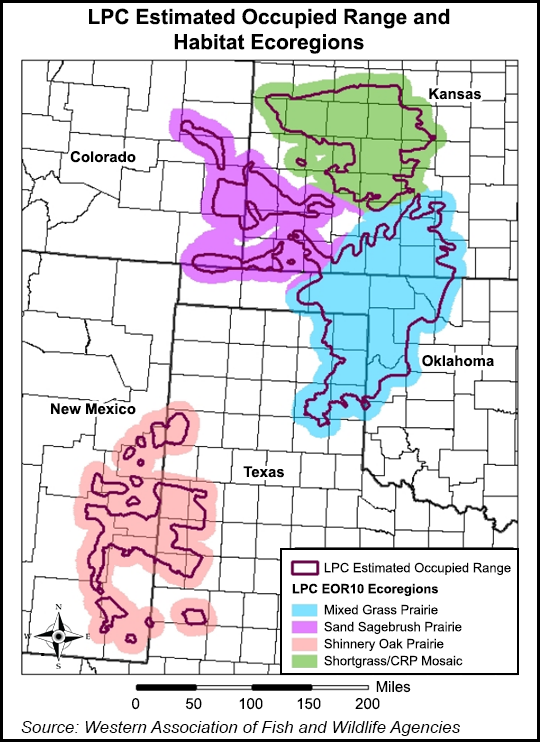E&P | NGI All News Access | Regulatory
Grouse Family Bird Stirs Hornet’s Nest in New Mexico
A member of the larger grouse family, the lesser prairie-chicken, has stirred up a controversy in eastern New Mexico where one county will consider Friday whether to challenge the U.S. Fish and Wildlife Service (USFWS) for designating the somewhat rare species as “threatened.” Oil/natural gas and ranching interests fear a negative impact.

Although this designation is a step away from a federal endangered species classification, Roosevelt County’s five-member elected commission has called a special session to determine whether it will give notice of intent to file suit against USFWS. The county must act by June 10, according to federal rules governing the process.
Roosevelt County’s action comes in the wake of a trio of conservation groups suing to gain full protection for the lesser prairie-chicken under the Endangered Species Act (ESA) while several states and their allies sued over the process that led to recently adopted measures to protect the bird (see Daily GPI, April 11).
Earlier in the year, USFWS said it made the move to designate the bird as a threatened species because of “its rapid and severe decline” in the limited areas where it has habitat in parts of New Mexico, Texas, Kansas, Oklahoma and Colorado (see Daily GPI, March 28). The bird has lost more than 80% of its natural habitat, according to USFWS, and its numbers dropped by half from 2012 to the end of last year.
As her county moves toward taking legal action, Roosevelt County Manager Charlene Webb told local news media that a lawsuit by a county against a USFWS action would be unprecedented. She said the county has already experienced $10,000 of added cost on a road project because the “threatened” designation requires an “environmental consultation” for the proposed work.
Oil and natural gas operators could run into the same challenges in pursuing exploration and production activity if the designation stays in place. Earlier, the Roosevelt County commissioners passed a resolution opposing the USFWS designation.
Roosevelt has approached the Coalition of Arizona/New Mexico Counties, which works with counties specifically on endangered species listings, for help on the issue.
Under the ESA, the “threatened” designation means a species is in danger of extinction “within the foreseeable future.” The category is one step below the “endangered” designation and is intended to allow for more flexibility in implementation of protections.
According to USFWS, a special rule under a section of the ESA will allow the five range states to continue to manage conservation efforts for the species and avoid further regulation of activities such as oil and gas development and utility line maintenance.
© 2024 Natural Gas Intelligence. All rights reserved.
ISSN © 1532-1231 | ISSN © 2577-9877 |
